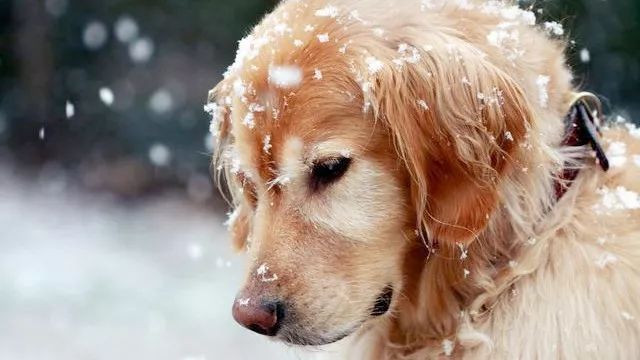How do I take care of my dog in the winter?

Many dog owners will have this view: "My furry child has so much fur that it is falling out everywhere, so why is it still cold?" Yes, in the long evolutionary journey of dogs, the role of fur is obviously to keep out the cold. . However, in modern society, dogs have become more and more accustomed to the definition of "pet". After being sheltered at room temperature for a long time, dogs, like us, have become afraid of the cold.
Dangers of low temperature
First of all, we need to understand what harm low temperature will bring to dogs. The first one is chilblain. When the dog's body temperature drops to a certain level, blood will automatically flow from the limbs to the center of the body to maintain the temperature of the organs. Their ears, paws, and tails become increasingly cold, and moisture in the tissues in these areas is more likely to crystallize and form frostbite. Typically, chilblains are not immediately obvious. You have to always pay attention to whether your dog's skin starts to harden or become cold. Severe frostbite will eventually cause your dog's skin to darken and fall off.
Next is hypothermia. This can easily happen when dogs are exposed to cold temperatures for too long. At first the dogs will shiver and their ears, paws, and tails will lose warmth. As body temperature drops further, dogs gradually begin to become depressed and even show signs of lethargy and weakness. If the condition continues to worsen, the muscles will begin to stiffen, the heart and breathing rates will slow down, and the stress response level will be severely reduced, which will eventually threaten their lives.
So whether your dog likes to play in the ice and snow, or he would rather lie on a cozy blanket and warm up. In the cold winter, learning some care tips can help you take better care of your dog.
- Put on your coat
Obviously, putting a coat on your dog is the simplest and most practical way. However, the thickness of clothes also varies with different dog breeds. It is obviously inappropriate to put the same thickness of clothes on golden retrievers and French bulldogs. A good dog coat should extend from the neck to the base of the tail and also provide adequate coverage of the belly. But keep in mind that clothes on your dog will not prevent frostbite on their ears, paws, or tail.
- Limit the time for outdoor activities
Although we have put clothes on the dogs, frostbite will still target those parts that are still exposed to the air. Of course, outdoor exercise is very necessary for other aspects of dog health problems. Therefore, we need to arrange outdoor sports time more reasonably in winter: give priority to taking furry children out on sunny days to supplement vitamin D; if the weather is not that good, please try to avoid periods with lower temperatures such as early morning or late at night. If these two times are really the only time, Also be sure to keep your outdoor activities short.
- Foot care
Even if we plan our outdoor activities carefully, some minor frostbite may still appear on our dogs’ paws. At this time, owners need to be more diligent than usual to help their dogs trim the fluff on their paws to prevent the fluff from causing infection in small wounds on their paws. For the same reason, please help your dogs clean their paws promptly after returning home from an outing.
- Stay away from heating equipment
When we come home from outdoor exercise, dogs will instinctively seek out a warm place. Think about a fluffy dog coupled with a little sun/stove and it sounds like a recipe for disaster. And too bright light can also cause irreversible damage to your dog’s eyes. Therefore, if you use heating equipment in your home, make sure your dogs keep an appropriate distance.
- Food, drinking water and moisturizing
In the winter, dogs will exercise less due to the cold. Therefore, it is even more important to avoid overfeeding to avoid digestive system problems. However, it is worth noting that the higher room temperature in winter means that dogs’ demand for drinking water will not be reduced too much due to reduced exercise, so it is necessary to ensure sufficient water intake for dogs. Another problem with higher room temperatures is that they can make your dog's skin drier. When you find that your dog's paws, ears or tail have some signs of cracking, you can apply moisturizing products such as scratch cream locally as needed.
- Protect the dog’s joints
You can use dog hip braces,dog elbow braces,dog knee braces and other dog braces. Wear a brace during daily walks and outdoor sports to protect your dog from injury.
The harsh winter makes dogs feel uncomfortable, and also brings a lot of worries to their owners. Dog owners here hope that these tips on winter care can help you and your dog make only beautiful memories this winter.





